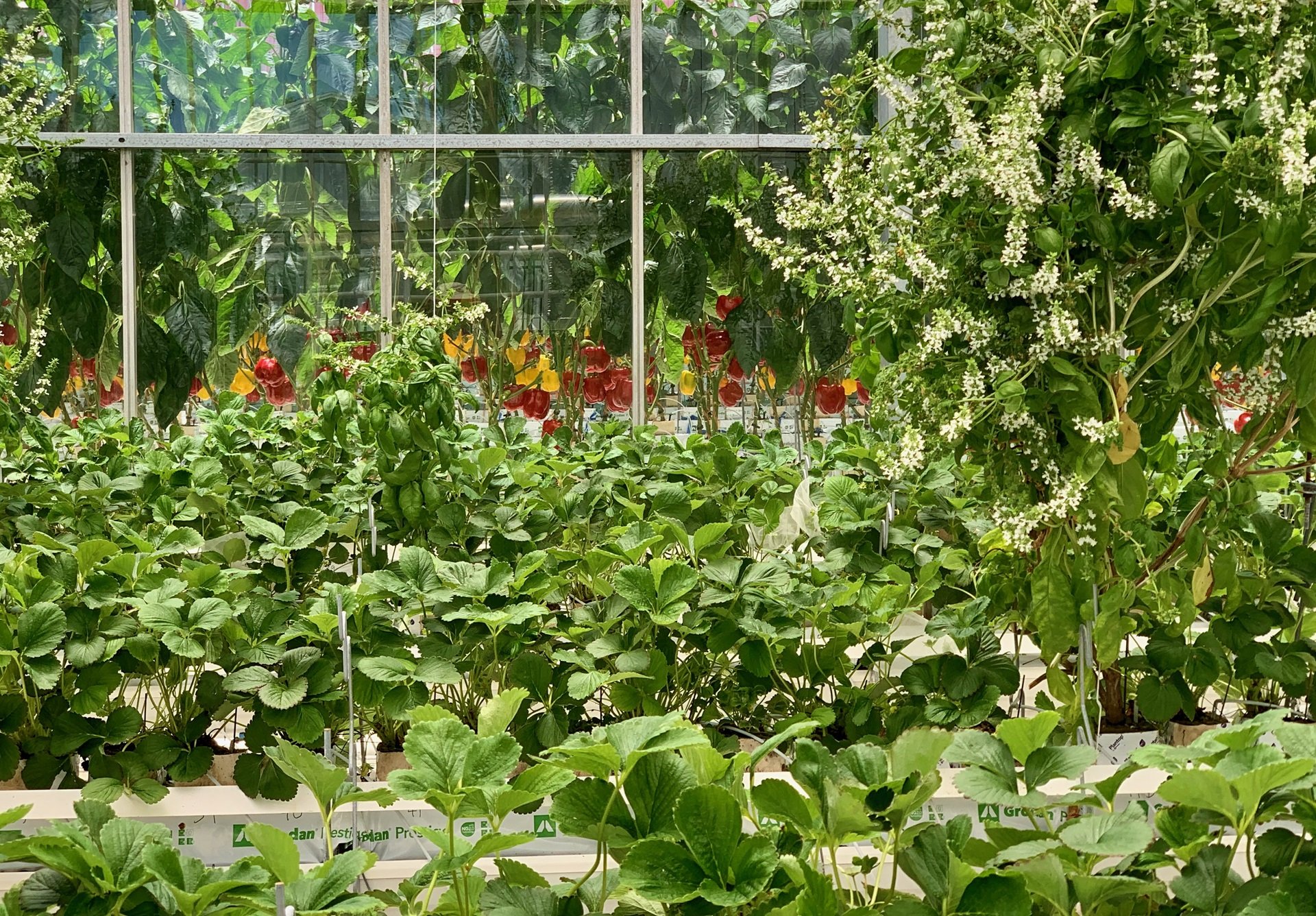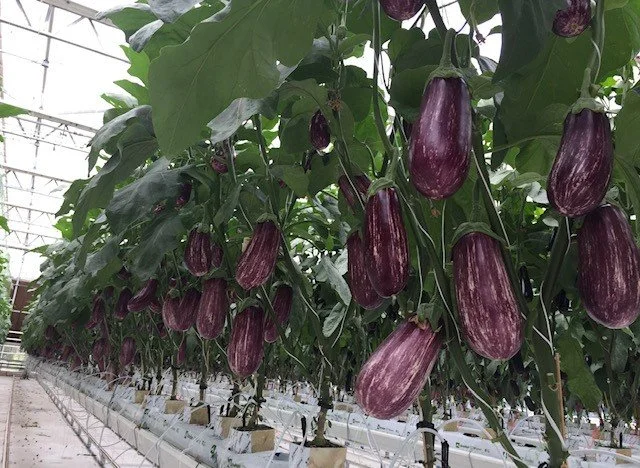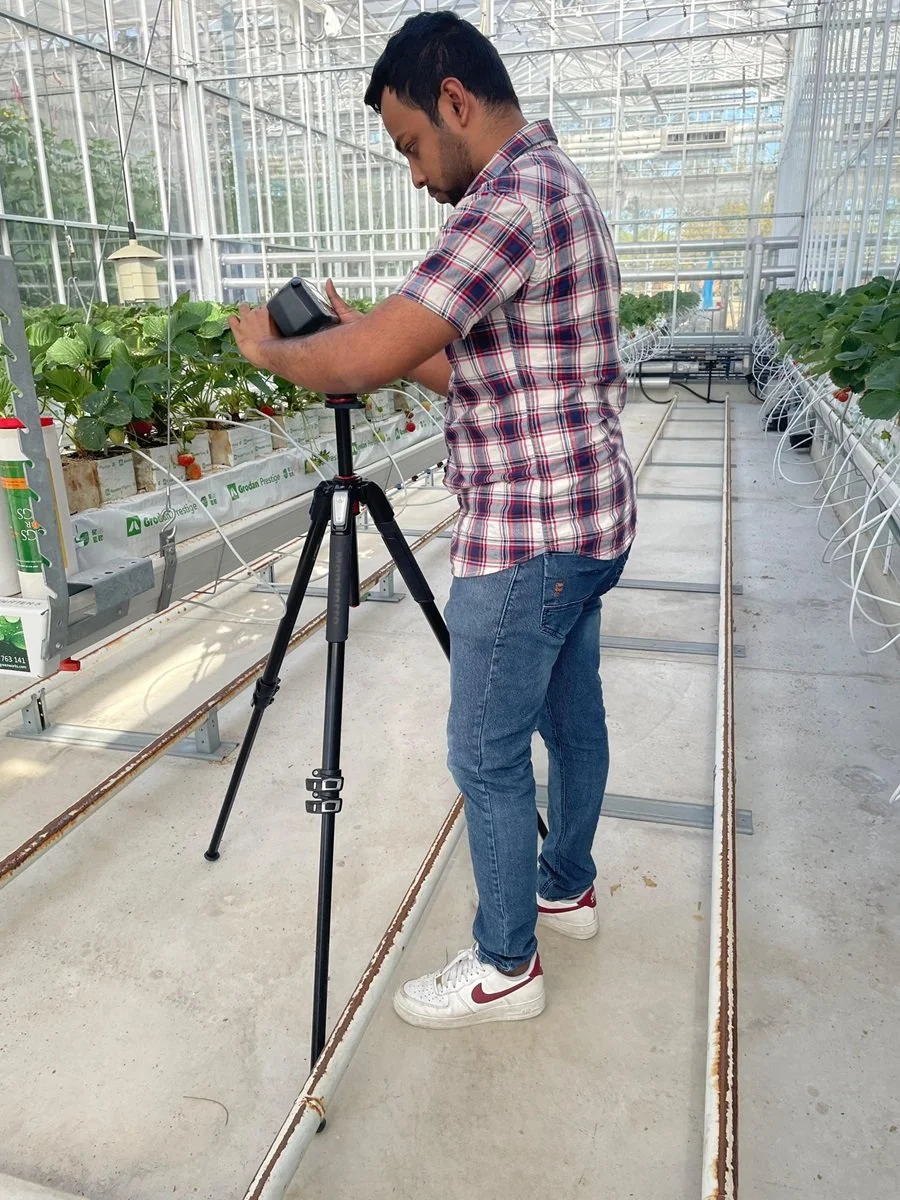
PROGRAM 1 -
Optimal production of future high-value crops
Program 1 Lead,
Professor Sergey Shabala
In Program 1, we’re aiming to increase the types of crops that can be grown in polytunnels, glasshouses and vertical farms.
We’ll be working to establish optimal growth conditions for crops like saffron, vanilla, ginger, and bush pepper, ensuring these innovations are ready for immediate integration by stakeholder organisations.
We’ll also develop Integrated Pest and Disease Management (IPDM) strategies tailored to protected cropping (PC), to reduce reliance on fertilisers and promoting sustainable practices across the sector.
This will be achieved via integrated and collaborative student projects that are co-designed with our partner organisations. Our students and researchers will gain valuable skills in areas such as targeting nutrient use efficiency (NUE) traits to develop or select low-input crop varieties, quality analytic testing, and advanced IPDM strategies.
Program 1 Projects
Project 1.1 - Optimisation of high value crops: a roadmap to integrate new crops into PC settings
Chief Investigators: Sharwood and Ghannoum
Partner Investigators: Potter and Ford
The integration of new, high-value crops into protected environments is an important priority for the horticulture industry. To enhance profitability and ensure horticultural sustainability, new higher-margin markets are needed.
In Program 1, HDRs will be at the centre of developing a roadmap to integrate new high value crops into medium-high tech growth facilities. They will be supported to develop strategies for selecting optimal growth conditions for crops, such as saffron, vanilla, ginger and bush pepper, by undertaking advanced research training in the following areas (with POs Syn, VP):
I. Screening and selecting germplasm suitable for growing high-value crops in protected facilities and assess for high tech growth;
II. Determining growth requirements for high-yielding scenarios (including appropriate ambient air temperatures and conditions to optimise vegetative to generative development, appropriate nutrient applications, and, in soilless systems, the appropriate electrical conductivity irrigation scheduling; and
III. Optimising lighting conditions by screening for performance under different conditions.
Project 1.2 - Climate Ready Varieties
Chief Investigators: Shabala and Chen
Partner Investigators: Ford and Potter
From early human civilisation, domestication of plants has targeted mostly yield components, such as larger seed size, reduced seed shattering, absence of secondary dormancy, optimisation of fruit size, shape and colour, and ease of harvesting, transportation, and storage.
Such prolonged selection for improved yield-related traits has diminished the genetic diversity in modern crops, resulting in a loss of abiotic stress tolerance that was present in wild relatives.
The increased frequency and severity of abiotic stresses brought by climate change requires re-introgression of climate resilience into high-yielding varieties, either by:
(1) introducing stress tolerance genes into present high-yielding crops; or
(2) increasing yields of already tolerant varieties.
In this project, PhD students and post-doctoral researchers will be supported to harness recent advances in molecular breeding and cell-based phenotyping (at UWA) to generate insights into the mechanistic bases of crop adaptation to major environmental stressors and create climate-ready varieties capable of maintaining high yield under stress.
Project 1.3- Quality & Nutritious Produce
Chief Investigator: Mathesius
Partner Investigators: Ayora
Researchers will be trained in state-of-the art analytical approaches (at ANU) to continuously monitor quality and nutritional aspects of PC-grown fruits and vegetables to ensure that any alterations to growing practices and new varieties sustain their nutritional qualities.
This includes traits, such as essential micronutrient content, vitamins, antioxidants, healthy fats, etc., depending on crop species.
Analytical assessment would also provide evidence for unwanted contaminations in the produce (e.g. herbicides, pesticides, insecticides) or known pollutants (e.g. PFAS), ensuring the produce meets quality and nutritional standards.
Project 1.4 - Pollination, IPDM and biosecurity of new high-value crops
Chief Investigators: Riegler
Partner Investigators: Potter
About 40% of annual global crop production is lost due to pests and diseases. While PC provides the opportunity to grow crop plants in an environment that restricts the damaging pests and pathogens encountered in the field, PC also excludes the beneficial arthropods required for the pollination of pollination-dependent crops and the natural enemies of accidentally introduced pests and pathogens, such as parasitoids, predatory mites or antagonistic microorganisms.
Also, the stable and controlled environmental conditions of PC may inadvertently create ideal conditions for accidentally introduced pests and pathogens.
Therefore, PC requires well-developed, specialised Integrated Pest and Disease Management (IPDM) strategies that minimise the risk of harmful pest and pathogen introduction, routinely monitor for pests and diseases, and employ and pest and disease management tools that work harmoniously with introduced (and managed) pollinators and beneficials.
PhD students and post-doctoral researchers working in this project will harness findings from our recent work that demonstrated the efficacy of Australian native stingless bees in PC pollination, and develop and refine applications to reach optimal pollination outcomes.
They will be supported to:
(1) design experiments that enrich the floral resources to sustain healthy and high-performing pollinators;
(2) evaluate the integration of pollinators with the use of biological control agents against common PC pests (e.g. thrips, spider mites, aphids) and pathogens (e.g. powdery mildew);
(3) explore automatisation of plant health monitoring to facilitate early detection of plant pests and diseases; and
(4) assess PC biosecurity with a focus on limiting entry pathways for pests and pathogens from the surrounding environment.






